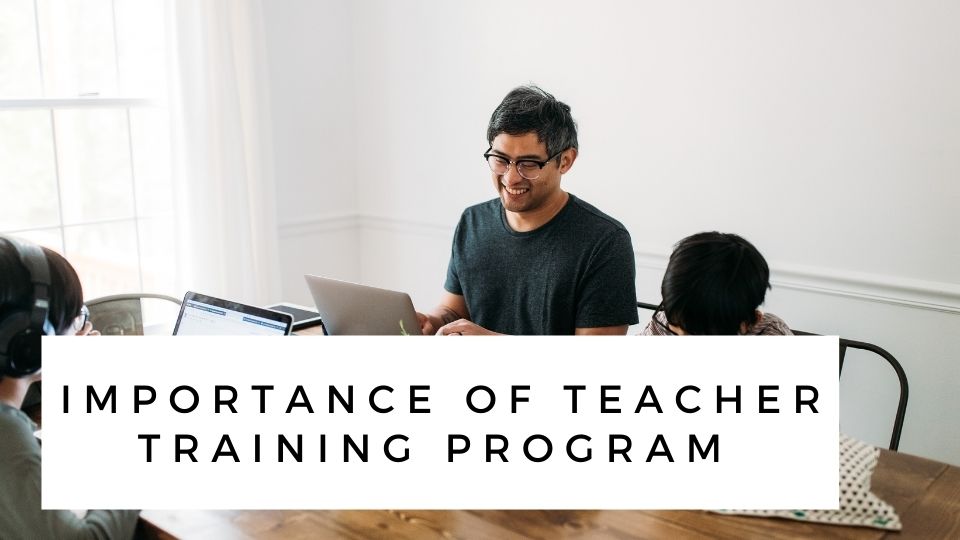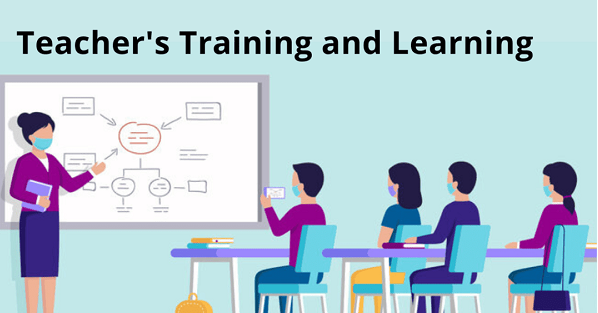Teachers play a crucial role in shaping the future by influencing students’ academic and personal development. To ensure they are effective, adaptable, and confident, high-quality teacher training programs are essential.
A well-designed training program equips teachers with pedagogical skills, classroom management strategies, subject knowledge, and technological proficiency, ensuring they are prepared to meet the evolving needs of education.
In this guide, we will explore:

- The different types of teacher training programs.
- Essential components of effective teacher training.
- The role of technology in modern teacher training.
- Challenges faced in teacher training and how to overcome them.
- Best practices for professional development of educators.
Types of Teacher Training Programs
Teacher training programs vary based on experience level, certification requirements, and instructional approach. Here are the main types:
1. Pre-Service Teacher Training (Initial Certification Programs) 🎓
- Designed for aspiring teachers who are preparing to enter the profession.
- Includes university-based education degrees (B.Ed., M.Ed.), alternative certification programs, and diploma courses.
- Focuses on theory, pedagogy, subject expertise, and classroom internships (student teaching).
📌 Example: Postgraduate Certificate in Education (PGCE) – A popular UK-based program that trains graduates to become certified teachers.
2. In-Service Teacher Training (Continuous Professional Development – CPD) 📖
- Provides ongoing training for current educators to enhance skills and stay updated with educational trends.
- Covers classroom strategies, digital teaching tools, inclusive education, and new assessment methods.
- Helps teachers earn advanced certifications, endorsements, and leadership roles.
📌 Example: National Board Certification (NBC – U.S.) – An advanced professional certification for experienced educators.
3. Alternative Certification Programs (Fast-Track Teacher Training) ⏩
- Designed for career changers or non-traditional educators who want to enter the teaching profession.
- Offers accelerated routes into teaching, often with on-the-job training and mentorship.
📌 Example: Teach for America (TFA – U.S.) and Teach First (UK) – Programs that recruit college graduates and professionals to teach in high-need schools.
4. Online Teacher Training Programs (EdTech & Digital Learning) 💻
- Provides flexible, self-paced, and interactive training for both new and experienced educators.
- Covers topics like blended learning, AI in education, and virtual classroom management.
- Offers certification courses from platforms like Coursera, Udemy, and Khan Academy for Educators.
📌 Example: Google for Education Certified Educator Program – Trains teachers on Google Classroom, digital tools, and technology integration.
Essential Components of Effective Teacher Training Programs
1. Strong Pedagogical Foundation 📚
- Understanding learning theories, instructional strategies, and curriculum design.
- Training in differentiated instruction to meet diverse student needs.
- Emphasizing student-centered, inquiry-based, and active learning approaches.
📌 Example: Montessori Teacher Training focuses on child-led, hands-on learning.
2. Classroom Management and Behavioral Strategies 🎭
- Techniques for maintaining discipline and fostering a positive learning environment.
- Conflict resolution and handling classroom disruptions effectively.
- Building strong teacher-student relationships for better engagement.
📌 Example: Positive Behavioral Interventions and Supports (PBIS) – A strategy used in U.S. schools to promote positive student behavior.
3. Subject Expertise and Instructional Strategies 🏫
- Teachers must stay updated on the latest subject matter, teaching methods, and curriculum changes.
- Specialized training in STEM, literacy development, bilingual education, and arts integration.
📌 Example: STEAM Teacher Training Programs train educators in science, technology, engineering, arts, and mathematics.
4. Technology Integration in Teaching 💡
- Training on digital tools, e-learning platforms, and virtual teaching methods.
- Using AI, AR/VR, coding, and gamification in education.
- Learning how to assess students in online and blended learning environments.
📌 Example: Microsoft Innovative Educator Program – Teaches educators how to integrate Microsoft tools like Teams and OneNote into classrooms.
5. Assessment and Evaluation Techniques ✅
- Designing effective formative and summative assessments.
- Using data-driven decision-making to track student progress.
- Training in alternative assessments, such as project-based learning and competency-based evaluation.
📌 Example: Assessment for Learning (AfL) training focuses on continuous student feedback and performance analysis.
6. Special Education and Inclusive Teaching Practices 🤝
✔ Training in Individualized Education Plans (IEPs), assistive technology, and differentiated instruction.
📌 Example: Orton-Gillingham Training – A specialized method for teaching students with dyslexia and reading challenges.
Challenges in Teacher Training and How to Overcome Them
| Challenges | Solutions |
|---|---|
| Lack of Practical Training | Increase hands-on internships, student teaching, and mentorship programs. |
| Keeping Up with Educational Trends | Encourage lifelong learning through workshops, online courses, and peer collaboration. |
| High Cost of Certification | Offer scholarships, grants, and employer-sponsored programs. |
| Teacher Burnout | Incorporate self-care, mindfulness, and work-life balance training into CPD programs. |
| Resistance to New Teaching Methods | Use demonstration-based learning to show real-world applications of new strategies. |
Best Practices for Professional Development of Educators
1. Peer Learning and Mentorship Programs 🤝
- Pair new teachers with experienced mentors to provide guidance and support.
- Encourage collaborative lesson planning and reflective teaching practices.
📌 Example: Instructional Coaching Programs help teachers improve their methods with peer feedback.
2. Microlearning and Short-Term Training Modules 📚
- Offer bite-sized, topic-specific training for quick skill enhancement.
- Example: 30-minute webinars on using AI in the classroom.
3. Research-Based Training and Evidence-Based Practices 🔍
- Encourage action research projects where teachers implement and evaluate new teaching strategies.
- Promote case studies and best practices from successful educators worldwide.
📌 Example: Visible Learning by John Hattie – A research-based approach identifying high-impact teaching strategies.
4. Professional Learning Communities (PLCs) 🏫
- Foster teacher networks and communities of practice for shared learning.
- Organize workshops, webinars, and discussion forums.
📌 Example: Edutopia and TeachThought offer online forums for educators to exchange ideas.
5. Continuous Reflection and Feedback 🔄
- Use teaching portfolios, video recordings, and student feedback to reflect on teaching methods.
- Encourage self-evaluation and goal-setting.
📌 Example: Lesson Study (Japanese Model) – Teachers collaboratively plan, observe, and refine lessons.
Conclusion: Investing in Effective Teacher Training
High-quality teacher training programs are essential for building confident, innovative, and effective educators. By focusing on pedagogy, technology, inclusive teaching, and continuous professional development, these programs empower teachers to adapt, inspire, and elevate the learning experience for students.
📌 Final Thought: An empowered teacher leads to engaged students and a brighter future for education.
💬 What teacher training strategies have worked best for you or your institution? Share your insights below! 🎓📚🔥



